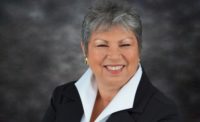The company will host a Technology Showcase at the conference facility that will take conference participants through a brief chronology of how the building code, technology and construction environment changes have altered the insurance climate considerably relative to underwriting EIFS coverage.
"For too many years, we believe people have been laboring under a set of perceptions that do not reflect the reality of what Dryvit residential EIFS represents, from an insurability standpoint," said Peter Balint, president and CEO of Dryvit. "We have decided to sponsor the IRMI conference because we would like the opportunity to demonstrate to insurance industry executives and decision-makers that the circumstances have changed dramatically as it relates to the residential construction industry, making insuring ... EIFS a profitable underwriting opportunity."
The company believes that a more careful review of the changes in the residential construction environment, changes in the building codes and the company's current residential system offerings, will lead insurance companies to a different conclusion about the product.
"Very clearly, not all EIFS manufacturers are the same and there are real differences in how some companies treat their residential business," said Balint. "We believe we can demonstrate clearly that Dryvit has been doing things, aided by significant positive changes in the construction environment as a whole, that have made the product a profitable insurance opportunity. All of the past litigation activity that has spurred insurance industry reviews of the EIFS are different than the current residential systems currently sold by Dryvit. The litigation involved residential projects utilizing the traditional face sealed or ‘barrier' systems. Dryvit's current residential EIF systems incorporate all of the benefits of those systems and adds a secondary weather barrier and drainage cavity behind the system. Dryvit will feature a dynamic model of the Residential MD system at the Showcase, demonstrating how moisture drains through the wall cavity."
In addition to the shift to moisture drainage technology in residential projects, other significant changes have taken place that have made EIFS a better insurance opportunity than ever before:
Changes in the building codes now require weather-resistive barriers to protect water-sensitive building substrates.
The Association of the Wall and Ceiling Industries has developed an applicator training program called "EIFSmart," in which applicators are trained in the proper application of EIFS. In addition, Dryvit requires all listed applicators to participate in a company-run educational program to maintain their listing.
A better understanding on the part of builders of the critical role flashing plays in the treatment of wall openings has mitigated moisture concerns with all cladding.
The biggest issue, Balint contended, lies in insurance companies controlling their exposure to risk by committing to underwriting criteria that takes into consideration the training and loss history of the applicator, the track record of the builder, the quality of the manufacturer whose products will be used on the job, and a strict adherence to the use of homogenous products designed by the manufacturer for use with the system selected.



Report Abusive Comment